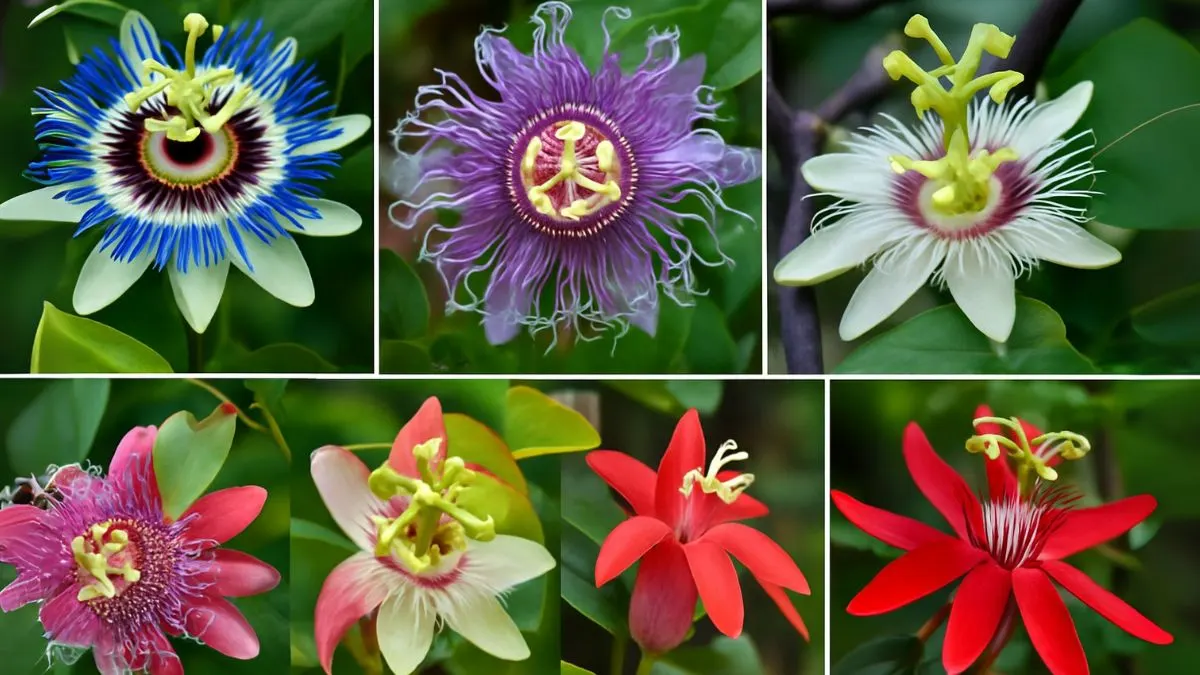Few plants capture the imagination like Passiflora, commonly known as passion flowers. With their intricate floral structures and exotic appeal, passion flowers have long fascinated botanists, gardeners, and casual plant lovers alike.
Did you know there are hundreds of passion flower species available? Each comes with its own distinct charm—some are known for their medicinal properties, others for their striking ornamental presence. Whether you’re in North America, Europe, or Asia, passion flowers thrive in diverse climates and continue to be a top choice for gardens, balconies, and even greenhouse collections.
In this blog, let’s dive into some of the most popular and unique varieties, along with practical care tips and uses.
The World of Passiflora

The genus Passiflora includes more than 500 species, most of which are climbing vines native to South America. They are prized for their extraordinary flowers, edible fruits (like passionfruit), and their ability to attract pollinators such as bees, butterflies, and hummingbirds.
1. Bluecrown Passionflower (Blue Passion Flower)
The Bluecrown Passionflower or Blue Passion Flower (Passiflora caerulea) is perhaps the most widely recognized species. Its blue and white petals form a mesmerizing structure that looks almost otherworldly.
- Origin: South America, but now grown worldwide.
- Why it’s loved: Hardy, easy to grow, and capable of withstanding cooler climates.
- Care tips: Prefers full sun to partial shade and well-drained soil.
👉 Many gardeners in Canada and the USA grow this variety because of its resilience, making it perfect for beginners who want something exotic yet manageable.
2. Purple Passionflower (Passiflora incarnata)
This species is native to the southeastern United States and is sometimes referred to as “Maypop.”
- Unique feature: Fragrant purple flowers with intricate corona filaments.
- Medicinal use: Traditionally used as a herbal remedy for anxiety and insomnia.
- Personal note: I once planted this in a sunny corner of my garden, and it not only flourished but also became a butterfly magnet during summer.
Also Read: Grow Cleome for Bold Blooms That Bees and Hummingbirds Can’t Resist
3. Passiflora edulis (Passionfruit Plant)
Best known for its fruit, this species combines ornamental beauty with practical use.
- Why grow it: Produces delicious passionfruits packed with vitamin C and antioxidants.
- Ideal for: Gardeners who love both edible and ornamental plants.
- Care tips: Needs warm climates, plenty of sun, and a strong trellis to climb.
4. Passiflora quadrangularis (Giant Granadilla)
One of the largest species in the genus, producing giant fruits and equally large flowers.
- Highlights: Its flowers are striking, and its fruits can weigh up to several pounds.
- Best suited for: Warm tropical or subtropical gardens.
- Bonus: Its large leaves provide dense cover, making it excellent as a natural screen.
5. Passiflora ligularis (Sweet Granadilla)
Known for its sweet, edible fruit, this species is popular in Central and South America.
- Flowers: Not as showy as the Bluecrown Passionflower, but still elegant.
- Fruit: Sweet and aromatic, often eaten fresh or used in juices.
6. Passiflora alata (Winged-stem Passionflower)
This variety stands out because of its crimson flowers with white and purple centers.
- Why it’s special: Highly fragrant, making it ideal for sensory gardens.
- Care tips: Needs warm temperatures and thrives in greenhouses in cooler climates.
Also Read: Viola Flowers: Tiny Blooms With Big Personality—And Easy Care!
7. Passiflora vitifolia (Crimson Passionflower)
This one truly grabs attention with its vivid red blooms.
- Origin: Native to Central America.
- Why grow it: Its exotic color and unique vine growth pattern make it a favorite among collectors.
- Personal insight: When grown near other flowering plants, its deep red color creates a striking contrast.
Quick Comparison Table of Passion Flower Varieties
Variety |
Flower Color/Look |
Main Feature |
Growing Zones |
Bluecrown Passionflower |
Blue & white, intricate form |
Hardy & ornamental |
6–11 |
Purple Passionflower |
Purple, fragrant |
Medicinal uses |
6–9 |
Passiflora edulis |
White & purple |
Produces passionfruit |
9–11 |
Passiflora quadrangularis |
Large flowers |
Giant edible fruit |
10–12 |
Passiflora ligularis |
White & pink hues |
Sweet fruit |
9–11 |
Passiflora alata |
Crimson, fragrant |
Strong fragrance |
9–11 |
Passiflora vitifolia |
Vivid red |
Exotic ornamental appeal |
10–12 |
Why Passion Flowers Are Worth Growing
- Biodiversity boost: Attract pollinators like bees, butterflies, and hummingbirds.
- Medicinal benefits: Some varieties are used in herbal remedies.
- Versatile beauty: Perfect for trellises, fences, and greenhouse cultivation.
- Global appeal: While native to the tropics, hardy species like the Bluecrown Passionflower make them accessible to gardeners in colder regions too.
From the elegant Bluecrown Passionflower or Blue Passion Flower to the fruit-bearing Passiflora edulis, passion flowers are living works of art that bring life, fragrance, and even food to your garden. With hundreds of passion flower species available, there’s truly one for every kind of gardener—whether you love ornamental beauty, herbal remedies, or delicious fruits.
👉 Ready to bring a piece of the tropics into your own backyard? Start with a hardy Passiflora variety and watch your garden transform into a haven of color and vitality.






